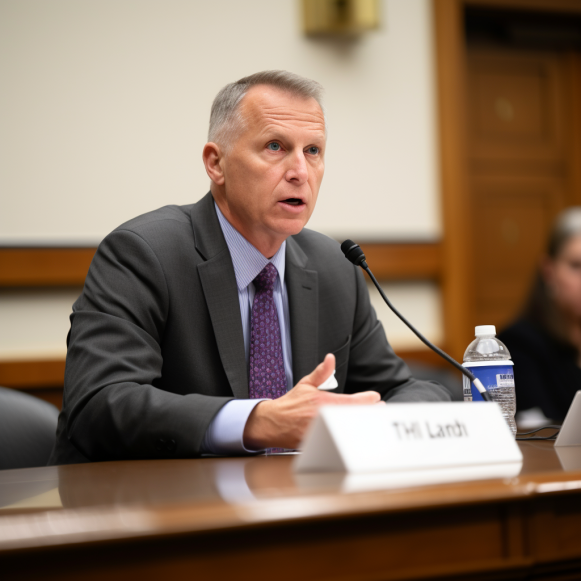The NIH ices a research project. Is it self-censorship?

Darius Tahir | (TNS) KFF Health News
Many Americans are clueless about their health. Communicating what scientists know has long been a challenge, whether due to people believing conspiracy theories or simply walking out of their doctor’s offices without a good idea of what was said.
With the recent wave of misinformation, the problem has become especially acute. And when Francis Collins was the director of the National Institutes of Health, the world’s premier medical research agency, he thought he had a solution: broadening the study of health communications. “All too often, we’ve seen accurate medical information trumped by inaccurate conspiracies and false information on social media.” “It’s a whole other world out there,” he said during a farewell media tour in 2021.
“I do think we need to understand better how — in the current climate — people make decisions,” he concluded.
Collins’ hopes, however, appear to be dashed. In a surprising turn of events, the National Institutes of Health’s acting director, Larry Tabak, has paused — some say killed — the planned initiative, Advancing Health Communication Science and Practice. Its supporters fear that the agency has censored itself — and the science that would have resulted from this funding stream — for political reasons.
The agency has provided shifting and inconsistent explanations, at times directly contradicting itself within days. According to sources familiar with the project, whatever the agency’s official story is, it has acted unusually, contrary to its normal procedures in deciding what science to fund.
Officials both inside and outside the NIH believe the agency is censoring itself in response to political pressures over misinformation. Attempts to research or refute inaccurate information have become contentious. The Republican-controlled House of Representatives has repeatedly investigated social media companies and government agencies for their efforts to regulate online speech. They’ve even targeted academics who simply study online information flows. Meanwhile, a federal court in Louisiana issued a decision in July on a long-running lawsuit brought by a group of Republican attorneys general and anti-vaccine groups to prevent government officials from communicating with social media companies, with exceptions for national security and criminal matters. That decision has since been overturned.
Even though the NIH has had to navigate political rapids for decades, including the ongoing debate over stem cell research and teen sexual behavior surveys, this is a particularly tense moment. “It is caught up in a larger debate about who gets to decide what is truthful information these days,” said Alta Charo, a law and bioethics professor emerita at the University of Wisconsin-Madison who has previously advised the NIH.
However, for researchers interested in the subject, this is a significant setback. The program was deemed potentially important enough to be supported by the agency’s Common Fund: a designation for high-priority programs that cross traditional institutional boundaries. In theory, it would investigate how health communication works, not just between doctors and patients, but also how mass communication affects Americans’ health. Researchers could investigate how testimonials, for example, influence patients’ use of vaccines or other therapies.
There was a lot of money on the line. The agency planned to spend more than $150 million on the project over a five-year period.
It is a necessary complement to the agency’s pioneering work in basic research for researchers. The National Institutes of Health has “done a remarkable job discovering the way cells communicate with each other,” according to Dean Schillinger, a researcher at the University of California-San Francisco. “When it comes to how people communicate with one another — doctors with patients or doctors with doctors — the NIH has been silent.” He claims that the tentative efforts to reverse this are now having a “chilling effect.” (On these developments, Schilinger co-authored an opinion piece in JAMA.)
Following positive reports from an agency’s advisory body last fall, advocates hoped for more encouraging developments. Indeed, the concept was mentioned in the NIH budget as recently as March. Participants also anticipated that the grant application process would begin near the end of the year.
Instead, researchers have received no information through official channels. “Investigators have been asking, ‘What’s the plan?'” Schillinger explained. Officially, “it’s been the sound of silence, really.”
That has been a perplexing anticlimax for a program that seemed to have everything going for it. “Given the urgency of misinformation, you would expect a formal announcement within a year,” said Bruce Y. Lee, executive director of the Center for Advanced Technology and Communication in Health at City University of New York.
Prior to Tabak’s abrupt reversal, advocates and sources involved in the process had been pleased with its progress. After Collins publicly floated the concept in late 2021, the agency took some public steps to define the project, including holding a workshop in May 2022, which Collins keynoted.
Later that year, the project’s leaders presented the idea to the agency’s Council of Councils, a group of external researchers who provide feedback on policy initiatives and projects. It was well received.
Edith Mitchell, an oncologist at Philadelphia’s Thomas Jefferson University Hospital, said the agency had a “major task, but one that is much needed, one that is innovative.” The proposal was approved 19-1 by the council.
The researchers were overjoyed. “As far as I was concerned, this program had been funded, accepted, and approved,” said Schillinger. (The agency says it is “not unusual” for programs to be delayed, but it does not track how frequently programs receive affirmative votes from the council and then are delayed.)
That good fortune carried over into the new year. The program was mentioned in the National Institutes of Health budget in March as one of the agency’s potential projects for the coming years. Then, according to NIH and other government sources, Tabak made an abrupt decision in April that was not communicated to some researchers until June.
Schillinger said he received a call from an NIH official early that month saying, “The program has been killed.” Academics who had previously inquired about the initiative and potential research efforts that could earn grants were being contacted by program officers. According to Schillinger, researchers were told, “You’re not getting an email” from the agency.
Tabak made the decision, according to a former White House staffer and two current NIH officials who spoke on the condition of anonymity because they did not have permission to speak on sensitive matters. The decision came as researchers and agency officials were preparing to open grant applications in the fourth quarter of the year. KFF Health News requested an interview with Tabak but received no response from agency spokespeople.
The agency disputes any final decision made regarding this research funding. According to Amanda Fine, the project is “still in the concept phase” and is “being paused to consider its scope and aims.”
However, the agency lists the health communications proposal under “former programs” on its website, and sources both inside and outside of government dispute this company line. They attribute the change to NIH’s political fears, which reflect the growing political controversy over studying anything related to misinformation, despite the fact that the proposal was designed to examine health communications in general, not just misinformation.
The rest of Fine’s statement contains a hint of this reasoning, which mentions the “regulatory and legal landscape around communication platforms.” When pressed, the agency later referred to unidentified “lawsuits.”
That’s most likely a reference to the Louisiana case, which was decided just weeks after the agency decided to put the Common Fund initiative on hold or kill it entirely.
Later, Fine provided a new explanation: budgetary concerns. “We also need to balance priorities in light of the current fiscal projections for fiscal years 2024 and 2025,” she wrote.
That explanation was not included in a June 6 note on the program page, and one NIH official confirmed it had not been discussed previously. When asked about the NIH’s budgetary position, which analysts at TD Cowen’s Washington Research Group believe will be flat, spokesperson Emily Ritter stated, “The NIH does not have a budget projection.”





